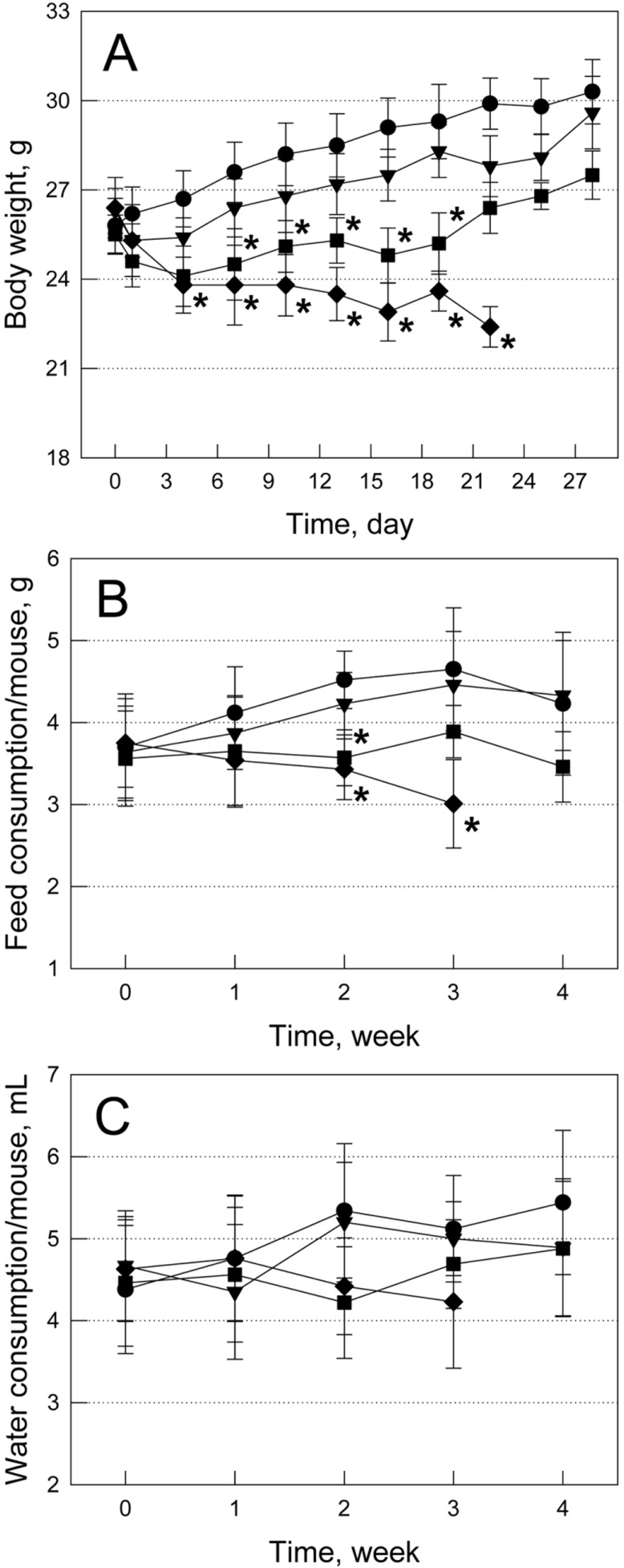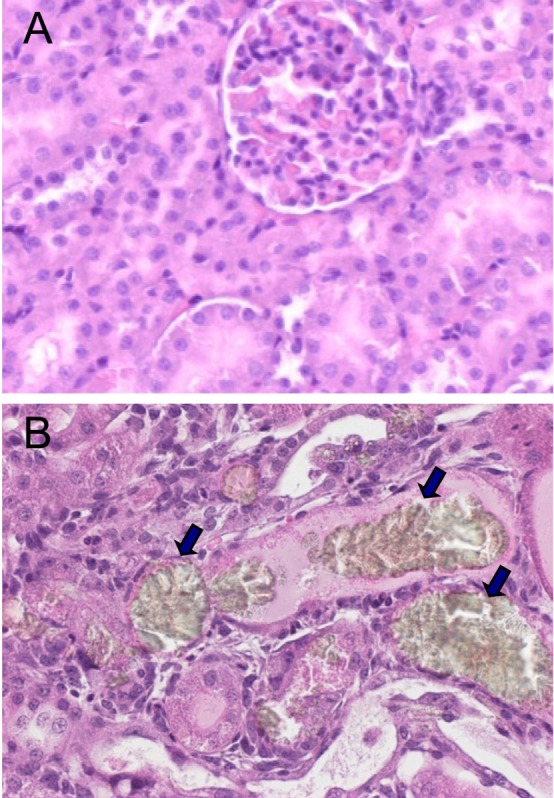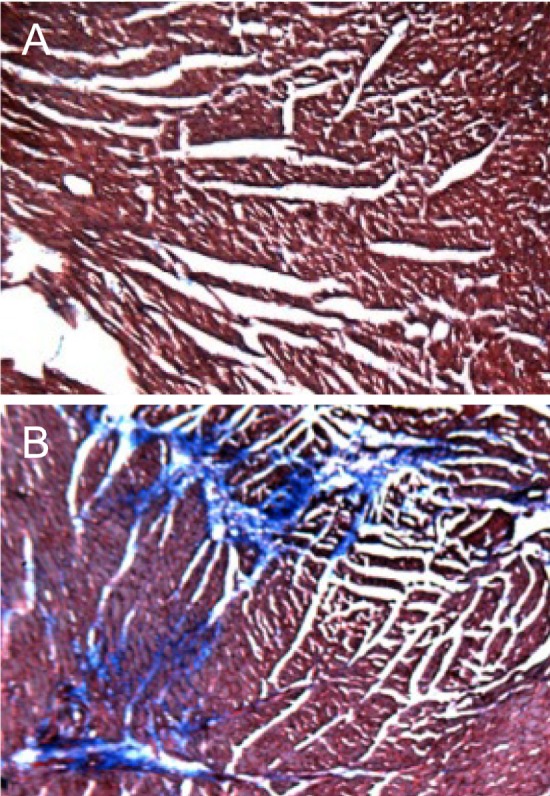Lab Anim Res.
2013 Mar;29(1):7-11. 10.5625/lar.2013.29.1.7.
Specific nephrotoxicity and cardiotoxicity of BT-CAL(R), Sigma Anti-bonding Molecule Calcium Carbonate, in mice
- Affiliations
-
- 1College of Veterinary Medicine, Chungbuk National University, Cheongju, Korea. solar93@cbu.ac.kr
- KMID: 2312097
- DOI: http://doi.org/10.5625/lar.2013.29.1.7
Abstract
- According to a high anti-osteoporotic efficacy of Sigma Anti-bonding Molecule Calcium Carbonate (SAC), repeated-dose toxicities of SAC were investigated to assess its feasibility as drug or functional food ingredient. Male ICR mice were given drinking water containing 0.006, 0.02 or 0.06% SAC for 4 weeks. SAC feeding decreased the body weights and feed and water consumptions of mice in a dose-dependent manner, especially, leading to severe emaciation and 70% death in 3 weeks in the high-dose (0.06%) group. Not only kidney and heart weights, but also the levels of blood urea nitrogen, creatinine, aspartate transaminase, and creatine phospokinase significantly increased after SAC administration, indicative of nephrotoxicity and cardiotoxicity. Such renal and cardiac toxicities were also confirmed by microscopic findings, exhibiting renal crystals and cardiac fibrosis, which may be due to the insoluble crystal formation and calcium overload, respectively. In conclusion, it is suggested that no observed adverse effect level of SAC is lower than 0.006% in mice, and that a long-term intake may cause serious adverse effects on renal and cardiac functions.
MeSH Terms
-
Animals
Aspartate Aminotransferases
Blood Urea Nitrogen
Body Weight
Calcium
Calcium Carbonate
Creatine
Creatinine
Drinking Water
Emaciation
Fibrosis
Functional Food
Heart
Humans
Kidney
Male
Mice
Mice, Inbred ICR
No-Observed-Adverse-Effect Level
Weights and Measures
Aspartate Aminotransferases
Calcium
Calcium Carbonate
Creatine
Creatinine
Drinking Water
Figure
Reference
-
1. Kaplan B, Hirsch M. Current approach to fracture prevention in postmenopausal osteoporosis. Clin Exp Obstet Gynecol. 2004; 31(4):251–255. PMID: 15672957.2. Li M, Shen Y, Wronski TJ. Time course of femoral neck osteopenia in ovariectomized rats. Bone. 1997; 20(1):55–61. PMID: 8988348.
Article3. Ohta H, Makita K, Suda Y, Ikeda T, Masuzawa T, Nozawa S. Influence of oophorectomy on serum levels of sex steroids and bone metabolism and assessment of bone mineral density in lumbar trabecular bone by QCT-C value. J Bone Miner Res. 1992; 7(6):659–665. PMID: 1414484.
Article4. Riggs BL. Wyngaarden JB, editor. Osteoporosis. Textbook of Medicine. 1992. 19th ed. Philadelphia: Saunders;p. 1426–1430.5. Fraser LA, Vogt KN, Adachi JD, Thabane L. Fracture risk associated with continuation versus discontinuation of bisphosphonates after 5 years of therapy in patients with primary osteoporosis: a systematic review and meta-analysis. Ther Clin Risk Manag. 2011; 7:157–166. PMID: 21691586.
Article6. Loke YK, Jeevanantham V, Singh S. Bisphosphonates and atrial fibrillation: systematic review and meta-analysis. Drug Saf. 2009; 32(3):219–228. PMID: 19338379.7. Honig S. Osteoporosis - new treatments and updates. Bull NYU Hosp Jt Dis. 2010; 68(3):166–170. PMID: 20969546.8. Muratore M, Quarta E, Grimaldi A, Calcagnile F, Quarta L. Clinical utility of clodronate in the prevention and management of osteoporosis in patients intolerant of oral bisphosphonates. Drug Des Devel Ther. 2011; 5:445–454.
Article9. Potter SM, Baum JA, Teng H, Stillman RJ, Shay NF, Erdman JW Jr. Soy protein and isoflavones: their effects on blood lipids and bone density in postmenopausal women. Am J Clin Nutr. 1998; 68(6 Suppl):1375S–1379S. PMID: 9848502.
Article10. Choi SY, Park D, Yang G, Lee SH, Bae DK, Hwang SY, Lee PK, Kim YB, Kim IH, Kang HG. Effects of Sigma Anti-bonding Molecule Calcium Carbonate on bone turnover and calcium balance in ovariectomized rats. Lab Anim Res. 2011; 27(4):301–307. PMID: 22232638.
Article11. Klaassen CD. Casarett & Doull's Toxicology: The Basic Science of Poisons. 2001. 6th ed. New York: McGraw-Hill;p. 35–82.12. Park D, Choi SY, Yang YH, Hwang SY, Yeon S, Lee JY, Kim IH, Kim YB, Choi EK, Kang HG. Anti-osteoporotic effects of sericincalcium conjugate in ovariectomized rats. J Biomed Res. 2011; 12:91–101.13. Osweiler GD. Toxicology. 1996. Hoboken: Wiley-Blackwell.14. Greiser M, Lederer WJ, Schotten U. Alterations of atrial Ca(2+) handling as cause and consequence of atrial fibrillation. Cardiovasc Res. 2011; 89(4):722–733. PMID: 21159669.
Article15. Kelly A, Elliott EB, Matsuda R, Kaneko N, Smith GL, Loughrey CM. The effect of K201 on isolated working rabbit heart mechanical function during pharmacologically induced Ca2+ overload. Br J Pharmacol. 2012; 165(4b):1068–1083. PMID: 21658026.16. Reagan-Shaw S, Nihal M, Ahmad N. Dose translation from animal to human studies revisited. FASEB J. 2008; 22(3):659–661. PMID: 17942826.
- Full Text Links
- Actions
-
Cited
- CITED
-
- Close
- Share
- Similar articles
-
- Withdrawal: Specific nephrotoxicity and cardiotoxicity of BT-CAL®, Sigma Anti-bonding Molecule Calcium Carbonate, in mice
- Effects of Sigma Anti-bonding Molecule Calcium Carbonate on bone turnover and calcium balance in ovariectomized rats
- Calcium carbonate as phosphate binder in hemodialysis patients
- Prevention of New Vertebral Fractures after Treatment with Risedronate, Alendronate or Calcium Carbonate in Patients with Osteoporotic Compression Fracture Treated with Cement Augmentation
- Hypercalcemia Associated with Acute Kidney Injury and Metabolic Alkalosis




